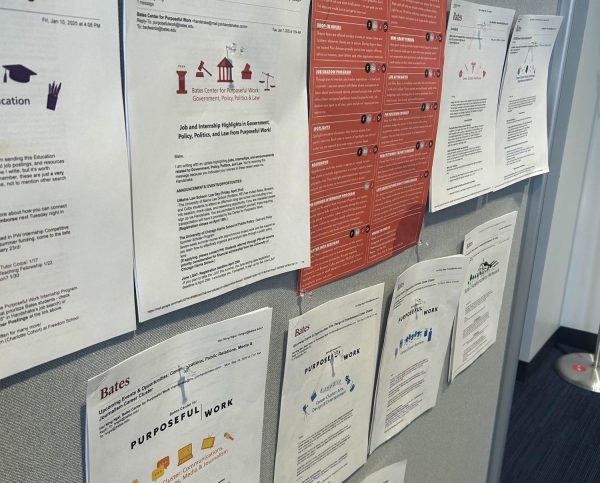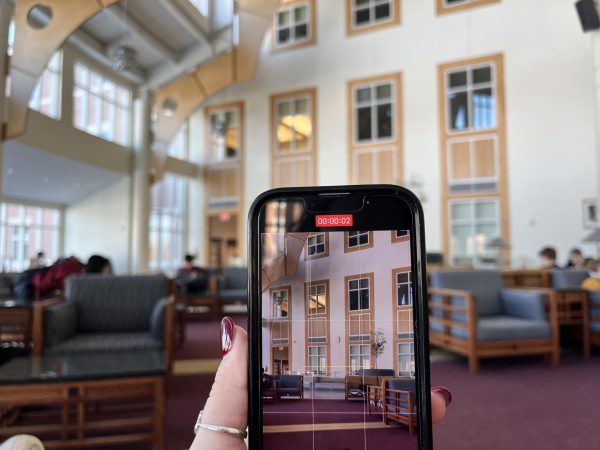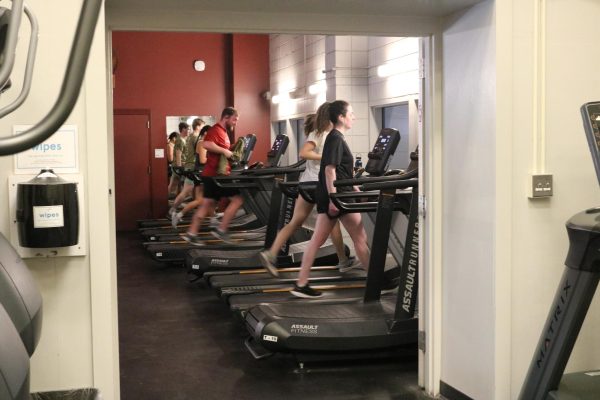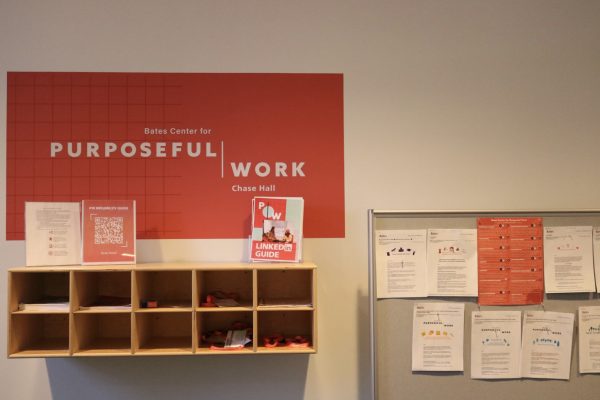The Diversity of the Bates Bubble Is a Lie
Liberal arts colleges like Bates market themselves as bubbles tucked away from the outside world of racism and bigotry. They highlight the small size of their student bodies and advertise to prospective students by arguing that the close-knit nature of their communities allow students to befriend peers from different backgrounds. But the reality is that no matter how high the percentage of students of color, Bates is not a socially racially integrated campus.
When I looked at colleges as a prospective student, I looked only at small liberal arts institutions. All of them argued that diversity was a cornerstone of their specific college experience. Admissions photos showed students of different ethnicities talking and studying together. I knew that admissions offices were selling an experience, but I didn’t know the extent of this lie until I arrived at Bates in the fall of 2019.
As a first-year, I felt socially untethered during my first few months at Bates. I’m not the extroverted type who does well in large social situations like the two-week gauntlet of orientation. I made a few close friends, but I was never sure where I’d be sitting in Commons meal to meal.
The one constant in my social life was Cold Front, the Bates women’s, non-binary, and gender non-conforming ultimate frisbee team. For a while, I just kept showing up to practices because I didn’t know how else to fill my time. Come mid-October though, I was feeling more comfortable. Some upperclassmen knew my name and I was getting to know the other first-years better.
I wasn’t aware of it at the time, but I was approaching a fork in the road. I could either choose to pursue frisbee and immerse myself in the outdoorsy, “crunchy,” and predominantly white athletic social world of Bates, or I could continue to drift along aimlessly. A senior in Asian-American Students in Action (AASIA) warned me that frisbee was a white space by default. They heavily implied that I would have to be an able-bodied athlete first and an Asian American individual second if I continued down this path.
This senior’s words troubled me, but I found myself falling into the frisbee “cult” anyways. This was a group of people that shared the same athletic interests as me and seemed happy to have me. Of the forty or so active members of the team, I could count the number of BIPOC on one hand, but no matter. I belonged.
Returning to campus as a sophomore, community liaison of AASIA, and a member of Cold Front’s committee for diversity, equity, and inclusion, I have both a better understanding of my social circles and a growing sense of conflict as I realize how separated my identities on campus are. I constantly feel that I am wearing different hats and must shed aspects of my identity to properly belong in either space. I eat dinner with half the frisbee team and then I scurry off to table for AASIA at the club fair. I run from one social world to another. The lack of overlap between two of the main activities I do on campus wears on me because both are so closely tied to who I am.
My personal experience is with frisbee, but the atmosphere of social outdoors and athletic spaces on campus is also dominated by the Outing Club, varsity sports, and club sports. When athletics and the outdoors are white, most social life on campus is also white by default. It feels sometimes as though the social culture of Bates tells BIPOC to assimilate into a culture of Patagonia and Chacos or to just stay in their lanes with others who look like them. Walking between two worlds is challenging beyond belief, and it often feels like I can’t do it well.
There is a pervading sense of color-blind racism on campus that is pushed by Bates administration and admissions, that because my class is the most diverse in Bates history, it means that the 28% consisting of BIPOC students is magically integrated with the other 72%. That is not true; the white status quo remains and to try to exist between two worlds, or just exist as a BIPOC on campus, takes a huge toll. It is disingenuous for Bates to push this narrative of a racially diverse and integrated student body when it is not the lived reality of most BIPOC students.
Further Reading:
https://www.washingtonpost.com/education/2020/06/11/how-achieve-real-diversity-higher-education/
https://www.aacu.org/publications-research/periodicals/broadening-our-definition-diversity
https://www.chronicle.com/article/diversity-fatigue-is-real/
Your donation will support the student journalists of Bates College and help us cover our annual website hosting costs.






